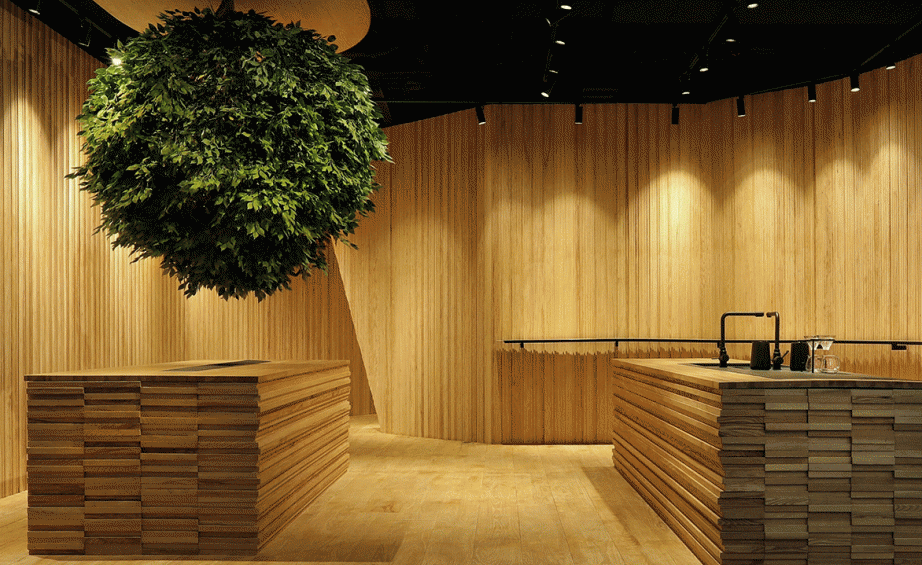Local interior architecture firm Robot 3 Studio has lent its minimally-styled hand to a new coffee atelier in the heart of Shanghai. Adding to the slew of coffee shops across town, which number thousands, making your design mark in this caffeinated city is a tall order (and I don’t mean a latte). While the west increasingly turns to herbal teas, (MUJI is opening up a matcha pop-up in London next week), Shanghai is warming its hands with mugs of Joe. Starbucks placed its largest ever store in Shanghai in December 2017, and a new one opens every 15 hours across China. But smaller coffee ‘boutiques’ (as Robot 3 Studio dubs this one) are also on the rise; with countless cold-brew, hand-pour and other-such ‘hip’ concoctions bubbling away across millennial-propped countertops city-wide.
Time More – the coffee appliance manufacturer behind this new wooden retreat inside Hong Kong Plaza in the Huangpu District – brings an exacting design-eye to proceedings. Founded in 2012 by ‘several coffee lovers’, the press note claims Time More to be ‘the best original hand-washed coffee appliance in the country’. Indeed, Time More is best known for its hand-held appliances that allow for cafe-quality coffee at home or on the go; a Red Dot Design award adds weight to its self-accolade. If personalised coffee on the go is the big sell for Time More, what could be the benefit of opening a bricks and mortar (in this case, copper and wood) store? More than a simple shop, the new Time More location is a ‘Hand Brew Coffee Experience Center’, where visitors can pour their own coffee, to their own exacting standards using Time More products, under the guidance of a trained Barista. The environment in which the coffee is brewed is crucial, too. ‘We understand this store as a world about “time”,’ Robot 3 Studio explains. ‘Coffee beans are alive, making, grinding, extracting, and every step of a cup of coffee requires patience and concentration. We’ve created a quiet world; time is quietly flowing here. The space is developed in a binary way, moving and static, just and soft, inside and outside, positive and negative. This gives the entire space a certain tension.’ Tension, it seems, that’s unwound by the perfect hand-pour.




